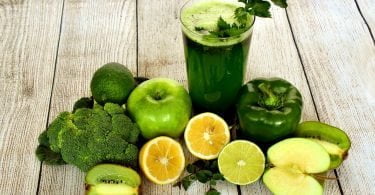Vegetarian diets are becoming increasingly famous. Celebrities are now more vocal about changes they’ve made to their lifestyle, restaurants (both pricey and more affordable) are investing in vegetarian options so they can cater to a growing percentage of the population, and supermarkets — now more than ever — offer an abundance of fresh and frozen produce all year-round giving the consumer more options to choose from. Because people choose to go from the “standard” diet that includes both meat and fish to one that eliminates completely these two, it is natural to wonder — are there any benefits to a vegetarian diet?
Health Benefits
Different Nutrients being consumed
Vegetarians tend to consume less saturated fats and cholesterol than meat eaters and consume more vitamins C and E, dietary fiber, folic acid, potassium, magnesium, and phytochemicals such as carotenoids and flavonoids, according to the Harvard Health Publication[1]. This difference in nutrients and macronutrients being consumed influences the overall health, and studies show that vegetarians are likely to have lower total and bad (LDL) cholesterol, lower blood pressure, and lower body mass index (BMI)[1]. These three parameters are indications of a reduced risk for many choric diseases and are associated with longer longevity.
Cardiac Health
People following vegetarian diets have a lower chance of having cardiac problems, such as strokes and heart attacks, when compared to those who consume meat and fish as part of their daily diets. According to studies cited by the Harvard Health Publication (a part of the Harvard Medical School), they were 25% less likely to die from these cardiac events[1].
For heart-protection, it is wise to choose high-fiber whole grains and legumes (a big part of most vegetarian diets) because they are digested slowly and help keep blood sugar levels steady throughout the day. Foods like chickpeas, black beans, lentils, chia seeds, and quinoa are great for this purpose, and the upside is that they’re cheap and easily included in a variety of dishes!
Another heart-friendly food is nuts, as they contain antioxidants, vegetable protein, fiber, mineral and healthy fatty acids such as omega-3.
Honestly, on my vegan diet, I wouldn't be surprised if I lived to be at least 300 years old.
— Granola Cruncher (@ray_romano_) December 2, 2017
Cancer
It is suggested by hundreds of studies that diets which include lots of fruits and vegetables, at least five servings a day, reduces the risk of developing certain kinds of cancer, and evidence shows that vegetarians have a lower incidence of cancer than meat-eaters do[1] [2]. Although it is obviously possible to consume a healthy amount of fruits and vegetables without giving up meat or fish, vegetarians have an easier time reaching, and even surpassing, the five servings a day recommended by doctors.
However, diets that don’t contain any red meats (whether or not it still includes other animal products) lead to a much lower chance of developing colon cancer, and research is being done to determine if other meats (such as poultry and fish) also lead to higher levels of carcinogenic substances in the colon[1].
Type 2 Diabetes
Research cited by the Harvard Health Publication shows that vegetarians’ risk of developing type 2 diabetes was about half that of non-vegetarians, taking into account age and BMI results[1]. According to research cited and credited by Boston University, non-vegetarian men were also twice as likely to die from a diabetes-related cause than vegetarian men, however, no similar link was found in the study when comparing women from the two dietary groups[2].
Environmental Downsides of Meat Consumption
Emission of greenhouse gases
The meat industry is responsible for the emission of 18 percent of global greenhouse gas emissions, while the transportation sector (including cars, tractors, boats, and planes) is responsible for 13 percent of the same types of gases[3]. Carbon dioxide and methane are byproducts of animal’s digestions (particularly that of cows) and they are one of the culprits for the rise in global temperature that has been registered.
Methane also traps around 72 percent more heat in the atmosphere when compared to carbon dioxide, and its most prominent source worldwide is the agricultural sector (also tied to the production of meat).
When you serve a raw, vegan and sugar-free dessert on MasterChef and the judges love it. #MasterChefUK pic.twitter.com/uIWlsO3yXS
— MasterChef UK (@MasterChefUK) December 7, 2017
Use of land and water
We are currently using 30 percent of the planet’s land surface area to produce meat, and this number includes land used for grazing and for growing crops that will be fed to animals, especially cows since they are the most grain consuming[4]. It takes seven kilograms of grain to produce just one kilogram of beef, which highlights the high demand for crops to be grown at a fast and effective rate[5]. According to several reports, somewhere between 70 and 80 percent of Amazon’s deforested land area in the past years are now being used to raise cattle or to grow crops to feed cattle[6].
On the other hand, the amount of water needed to produce one kilogram of animal flesh such as pork or beef is exponentially higher than that needed to grow an equivalent amount of plant-based products like soy, for example. In fact, you need 15.415 liters of water to raise just one kilogram of bovine meat[7] — a figure that is much higher than the 2.000 liters of water needed to grow one kilogram of soybeans (a plant-based protein source)[8].
Intensive Fishing
Sonar and radar technologies started being applied to the fishing industry, which made big schools of fish easier to detect and catch. With this, over the years, we have witnessed a phenomenon called overfishing, which basically consists in the fast decrease of the specimen of a given species due to intense fishing. This creates a gap in maritime food chains leading to an imbalance and consequent disruption of normal interactions between sea animals[9].
While many fishing practices can be good at target fishing (capturing only the intended species), there is still the issue of the bycatch. This happens when certain fishing methods, namely the one known as longline, cause the death of species considered useless for human consumption, for example, sharks and sea turtles. Just over the past twenty years, an estimated 85.000 sea turtles were killed as bycatch, and 3 million sharks are lost to bycatch each year[9]. This also causes a deregulation of other marine animal populations due to the loss of their primary food source or predator.
As a number of studies on the impact that the meat and fishing industries have on our health and our planet increases, the scientific community and politicians have been joining efforts to inform the population and implement environmentally friendlier policies regarding these economical practices.
Sources:
[1] https://www.health.harvard.edu/staying-healthy/becoming-a-vegetarian[2] https://www.bu.edu/themovement/past-issues/spring2011/being-a-vegetarian/
[3] http://www.fao.org/newsroom/en/news/2006/1000448/index.html
[4] http://science.time.com/2013/12/16/the-triple-whopper-environmental-impact-of-global-meat-production/
[5] http://www.earthsave.org/environment.htm
[6] http://www.onegreenplanet.org/animalsandnature/beef-production-is-killing-the-amazon-rainforest/
[7] https://www.washingtonpost.com/news/wonk/wp/2016/06/30/how-meat-is-destroying-the-planet-in-seven-charts/?utm_term=.35b9ec5564f5
[8] http://www.unwater.org/water-facts/water-food-and-energy/
[9] https://www.environmentalscience.org/environmental-consequences-fishing-practices









